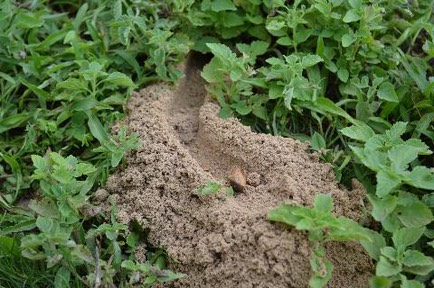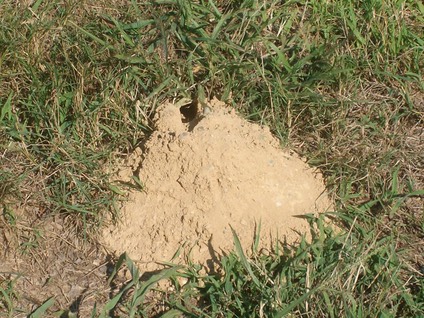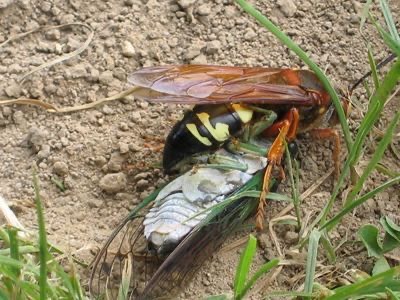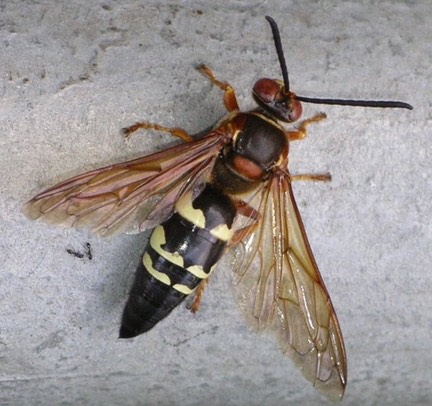 Coined "The Gentle Giant”, the scientific name for this wasp is Species Speciosus (Drury) in the order: Hymenoptera. You can identify them by the rusty red head and thorax, they are overall black with yellow band markings on the abdominal segments. The wings are rust colored. We have a few other wasps in the sphecid family of wasp that are frequent in Texas and include the digger wasp, sand wasps, mud daubers, and the tarantula hawk. Cicada Killers are harmless to humans females have to the ability to sting, however, it has been extremely rare that a female cicada has stung. Males do not have a stinger and can not sting.
Coined "The Gentle Giant”, the scientific name for this wasp is Species Speciosus (Drury) in the order: Hymenoptera. You can identify them by the rusty red head and thorax, they are overall black with yellow band markings on the abdominal segments. The wings are rust colored. We have a few other wasps in the sphecid family of wasp that are frequent in Texas and include the digger wasp, sand wasps, mud daubers, and the tarantula hawk. Cicada Killers are harmless to humans females have to the ability to sting, however, it has been extremely rare that a female cicada has stung. Males do not have a stinger and can not sting.

Life Cycle: The larva spend the winter in the ground in the larval or pupal stage. They emerge from the ground in the summer, feed, mate and produce new nesting burrows. The female digs a burrow with multiple cells. The burrow is approximately 6” in depth and then will be extended 90 degrees to the left

and right, or both another 6” or more. She will create cells in the burrows and deposits paralyzed cicadas she has stung and deposited an egg on. The larva hatches from the egg and molts several times (instars) before pupating inside a woven, spindle-shaped brown case measuring up to 1 1/4 inch long. She has on cycle generation per year.
Habitat, Food Source(s): They do have mouthparts and are for chewing. They like to nest in sandy and sandy loam areas. Females are solitary and each create their own nests even though they appear to be nesting in a common area. They are active in the months of July and August, This coincides  with the arrival of the cicadas. The female cicada killers attach, sting and paralyze the cicada. The female will then fly, glide or drag the cicadas back to their burrowed nests laying an egg on the paralyzed cicada and intern the larva will consume while maturing in the cell. The adults feed and consume floor nectar.
with the arrival of the cicadas. The female cicada killers attach, sting and paralyze the cicada. The female will then fly, glide or drag the cicadas back to their burrowed nests laying an egg on the paralyzed cicada and intern the larva will consume while maturing in the cell. The adults feed and consume floor nectar.

Pest Status: The cicada killer wasp is on of the largest in its family. As we have already mentioned the females are capable of shining. They are rarely aggressive towards people and animals. Males are unable to sting since they do not have a stinger. In an area where large amounts of females nest they can become a nuisance and cause concern to people because of their large size,flow flight and nesting activities. You can identify the nests of the female by a pile of soil excavated from the burrows and may have disturb grass in the area.